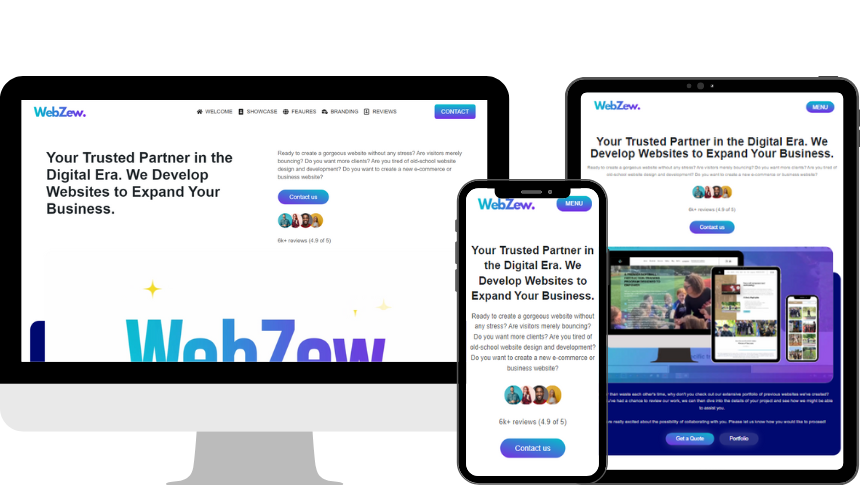Imagine scrolling through a website that feels like it’s reading your mind. The buttons are just where you’d expect them, the colours soothe your eyes, and the layout nudges you gently towards that “buy now” click without you even noticing. Sounds like magic, right? Well, it’s not—it’s neuro-design, the cutting-edge fusion of brain science and web development that’s revolutionising how we build digital experiences.
In a world where attention spans are shorter than a goldfish’s (that’s about eight seconds, by the way), websites can’t afford to be anything less than intuitive. Enter neuro-design tools: software powered by AI and neuroscience that analyse how our brains tick, helping developers create pages that don’t just look good but feel right. Whether you’re a web designer tweaking a landing page or a developer coding an e-commerce powerhouse, these tools are your secret weapon for turning casual visitors into loyal fans.
But what exactly are they, and why should you care? In this guide, we’ll dive deep into the science, the tools, and real-world wins that prove neuro-design isn’t just hype—it’s the future of user-centric web development. Buckle up; by the end, you’ll see your favourite sites in a whole new light.
Introduction to Neuro-Design Tools
What Are Neuro-Design Tools?
Neuro-design tools are like a window into the human brain, applied directly to web interfaces. At their core, they’re platforms that use data from neuroscience—think brain scans, eye movements, and behavioural patterns—to optimise how websites look and function. Instead of guessing what users want, these tools simulate or measure real human responses, ensuring every element from fonts to navigation drives better engagement.
Picture this: you’re designing a blog. Traditionally, you’d A/B test layouts manually, hoping one performs better. With neuro-design tools, AI crunches psychological data to predict which version will hold attention longer. It’s proactive, not reactive, making your workflow faster and your results more reliable.
These tools aren’t just for big tech giants; they’re accessible to freelancers and small teams too. They bridge the gap between raw code and emotional connection, turning static sites into dynamic, brain-friendly experiences.
How They Relate to Neuroscience and Web Design
Neuroscience studies how our brains process information, make decisions, and form habits. Web design, on the other hand, is about crafting visual and interactive spaces that guide users seamlessly. Neuro-design tools marry the two by translating brain insights into practical design tweaks.
For instance, neuroscience tells us that our eyes gravitate towards contrast and symmetry. A neuro-design tool might overlay heatmaps on your wireframe to show where users’ gazes linger, then suggest adjustments based on proven neural pathways. It’s like having a psychologist on your dev team, but one that speaks HTML and CSS.
This relationship isn’t new—early pioneers like Don Norman coined “emotional design” in the ’90s—but AI has supercharged it. Today, tools integrate machine learning to evolve designs in real-time, adapting to global user behaviours. The result? Websites that don’t just work; they resonate on a subconscious level.
The Science Behind Neuro-Design
Basics of Human Psychology & Decision-Making in Design
Our brains are wired for survival, not scrolling. When we land on a webpage, decisions happen in milliseconds: Do I stay or bounce? Is this trustworthy? Neuro-design taps into these instincts, using psychology to shape choices without overwhelming the user.
Take decision-making: We overload users with options, and they freeze (hello, choice paralysis). Neuro-tools help by simplifying paths, drawing on principles like scarcity or social proof to nudge actions. It’s not manipulation; it’s meeting the brain where it lives—efficient, intuitive, and rewarding.
Real talk: In web dev, ignoring psychology leads to high bounce rates. A study from Nielsen Norman Group found that 88% of users are deterred by poor usability. Neuro-design flips that script, aligning designs with how we naturally think and feel.
Cognitive Biases (e.g., Hick’s Law, Fitts’s Law, Gestalt Principles)
Cognitive biases are our mental shortcuts—flaws and features of the brain that designers can harness. Hick’s Law states that the time to make a decision grows with the number of choices. So, a cluttered menu? Disaster. Neuro-tools simulate this, recommending streamlined navigation to cut decision fatigue.
Fitts’s Law is all about ease of reach: Bigger, closer targets are easier to hit. On mobile, this means thumb-friendly buttons. Tools like these generate predictive models, showing how button size affects click rates based on neural motor responses.
Then there’s Gestalt principles—our brain’s love for patterns. Proximity groups elements, closure fills gaps, and similarity creates harmony. Neuro-design applies these via AI analysis: Upload a mockup, and it flags violations, like scattered CTAs that confuse the eye. Example? A e-commerce site using Gestalt to cluster related products—sales jump because the brain perceives them as a cohesive set.
Emotional Design and User Trust
Emotion isn’t fluffy; it’s functional. Donald Norman’s levels—visceral (gut reaction), behavioural (usability), and reflective (long-term satisfaction)—form the backbone here. Neuro-tools measure visceral appeal through sentiment analysis of user sessions, ensuring first impressions spark joy, not frustration.
Trust? It’s built on familiarity and transparency. Warm colours evoke safety; consistent branding signals reliability. Tools track emotional responses via implicit metrics, like dwell time on trust badges. A banking app, for example, might use neuro-insights to place security icons where the brain seeks reassurance, slashing abandonment by 20%.
In short, emotional design turns users from skeptics to superfans, and neuro-tools make it data-driven.
How Neuro-Design Tools Work
AI & Machine Learning in User Behaviour Analysis
At the heart of neuro-design are AI and machine learning, which sift through vast datasets to uncover patterns humans miss. Machine learning algorithms train on anonymised user data—clicks, scrolls, hesitations—to build models of behaviour.
Upload your site, and the AI runs simulations: How does a red CTA button fare against blue? It predicts based on neural correlates, like dopamine hits from rewarding interactions. Over time, these models learn, refining suggestions for your specific audience.
It’s iterative magic. Start with a baseline scan, apply tweaks, re-scan. Developers love it—no more gut feels; just actionable, brain-backed intel.
Eye-Tracking, Heatmaps, and Attention Mapping
Eye-tracking tech mimics human vision, using cameras or predictive AI to trace gaze paths. Tools generate heatmaps: Red hotspots show fixation points, blue fades for ignored zones. Spot a dead menu? Redesign it.
Attention mapping goes deeper, layering cognitive load. Does a hero image overload the brain? The tool flags it, suggesting simpler visuals. For web devs, this means optimising load times not just for speed, but for mental bandwidth.
Example: A travel site uses eye-tracking to ensure destination images draw eyes to booking buttons. Result? 15% uplift in reservations, all from subconscious guidance.
Personalisation Engines
Personalisation isn’t one-size-fits-all; it’s brain-specific. These engines use ML to segment users by psychographics—impulsive browsers vs. deliberate researchers—then tailor experiences.
Netflix nails this: Algorithms predict preferences based on viewing habits, tied to emotional triggers like nostalgia. Neuro-tools feed these engines with bias data, ensuring recommendations feel serendipitous, not salesy.
For your site, it could mean dynamic content: Show urgency to FOMO-prone users, details to analytical ones. It’s like a custom neural pathway for every visitor.
Benefits of Neuro-Design Tools in Web Development
Improved User Engagement
Engagement isn’t clicks; it’s captivation. Neuro-tools boost it by aligning with attention economics—our finite focus. Heatmaps reveal drop-offs; AI fixes them with frictionless flows.
Stats don’t lie: Sites using neuro-principles see 30% longer sessions (per Crazy Egg data). Users linger because the design feels effortless, like a well-worn path in the brain.
Increased Conversion Rates
Conversions thrive on subtle persuasion. By leveraging biases like anchoring (first price sets expectations), tools optimise funnels. A/B tests informed by neuro-data convert 20-50% better than random ones.
E-commerce example: Amazon’s “frequently bought together” exploits similarity bias, nudging upsells that feel natural. Developers using these tools replicate that, turning browsers into buyers.
Enhanced User Experience & Satisfaction
UX is the emotional residue of interaction. Neuro-design ensures satisfaction by minimising pain points—cognitive dissonance from mismatched expectations.
Post-launch surveys spike with these tools; users report feeling “understood.” It’s loyalty fuel: Happy brains return, share, subscribe.
Examples of Popular Neuro-Design Tools
Let’s spotlight some stars in the neuro-design galaxy. Each brings unique flair, blending science with simplicity.
- Crazy Egg: This heatmap hero uses AI to visualise clicks and scrolls, rooted in Fitts’s Law for target optimisation. Upload a page, get confetti maps showing hot zones. Ideal for tweaking CTAs—e.g., a blog seeing 40% more subs after heatmap-guided redesigns.
- Hotjar: Beyond heatmaps, it polls users on emotions, tying into affective computing. Watch rage-clicks (frustrated repeats) to fix bugs. For devs, it’s gold: One e-com client cut cart abandonment by 25% via feedback-heatmap combos.
- EyeQuant: Pure neuroscience sim—uses ML to mimic 1,000+ eye-tracks per design. Predicts attention pre-launch, applying Gestalt for layout harmony. A fintech firm used it to boost form completions by 35%, all from bias-aware tweaks.
- Attention Insight: VR-based eye-tracking for immersive tests. It maps emotional responses, perfect for AR previews. Brands like Unilever swear by it for ad creatives that hook subconsciously.
- Adobe Sensei: Integrated into Creative Cloud, it auto-suggests edits via neural nets. Analyzes composition for balance, evoking trust through symmetry. Web pros use it for rapid prototyping—cut design time by half while amping emotional pull.
These aren’t exhaustive, but they’re starters. Pick one, integrate via API, and watch your sites evolve.
Websites That Use Neuro-Design Successfully
Big players don’t guess; they neuro-engineer. Here’s how.
Case Studies
- Amazon: The king of personalisation. Its recommendation engine uses ML on purchase psychology—scarcity for urgency, social proof for trust. Heatmap-driven product grids follow Hick’s Law, limiting choices per row. Outcome? 35% of sales from recs, billions in revenue.
- Netflix: Binge enabler extraordinaire. Thumbnails? Neuro-optimised for emotional resonance—faces trigger empathy via mirror neurons. Algorithms predict drop-off via attention data, auto-skipping intros. Users watch 20% more, hooked on brain-reward loops.
- Duolingo: Gamified learning with micro-interactions that ping dopamine. Streaks exploit loss aversion (don’t break the chain!); colours shift for motivation. Eye-tracking refined lesson flows, boosting retention by 12%. It’s education meets subconscious nudge.
- Airbnb: Trust is currency here. Photo carousels use Gestalt for visual storytelling, building desire. Personalised searches leverage past behaviours, reducing search friction. Result: 15% conversion lift, as users feel “seen” by the design.
These cases show neuro-design scaling from startups to empires, always prioritising psychological fit.
Psychological Triggers in Website Design
Colour Psychology
Colours aren’t neutral; they evoke. Blue screams trust (think banks), red urgency (sales banners). Neuro-tools test palettes against mood data—warm tones for e-com coziness, cool for tech sleekness.
Pro tip: A/B green “add to cart” vs. orange; the latter wins 10% more clicks via excitement bias.
Typography Influence
Fonts whisper personality. Serif for tradition (news sites), sans-serif for modern zip (apps). Readability ties to cognitive ease—bigger line heights cut strain, per Gestalt continuity.
Tools like Attention Insight scan for font fatigue, ensuring hierarchy guides the eye without effort.
Micro-Interactions
Tiny feedbacks—like button hovers that ripple—reward actions, firing neural “wins.” They build habit loops, per Duhigg’s model. A loading spinner with progress? Reduces perceived wait by 30%, tricking the brain’s time bias.
Neuro-Design vs Traditional Web Design
Key Differences
Traditional design relies on intuition and metrics like bounce rate. Neuro-design adds brain layers: Predictive sims over post-hoc tests, emotional metrics alongside analytics.
Trad: Static wireframes. Neuro: Dynamic, bias-adjusted iterations. It’s evolution—deeper, data-richer.
Why Neuro-Design Is the Future
With AI democratising access, neuro-tools level the field. As users demand hyper-personalisation, traditional methods lag. Future-proof your dev skills: Embrace it, or watch competitors wire users’ brains first.
Challenges & Ethical Concerns
Manipulation vs Genuine UX Improvement
The line blurs: Nudges can empower or exploit. Dark patterns—like hidden fees—abuse biases, eroding trust. Ethical neuro-design prioritises value; tools with audit features help flag overreach.
Data Privacy Issues
Eye-tracking needs data—lots. GDPR looms; anonymisation is key. Tools like Hotjar offer consent modes, but devs must transparent: “We track to improve your experience.”
Balancing Persuasion with Trust
Persuade without patronising. Use neuro for delight, not deceit. Build in opt-outs; test for inclusivity. When done right, it’s win-win—users feel empowered, not played.
Future of Neuro-Design Tools
Predictive Personalisation
Tomorrow’s tools foresee needs: AI anticipates queries via neural patterns, pre-loading content. Imagine a site “knowing” you’re holiday-shopping from scroll hesitations.
Integration with AR/VR
Virtual spaces amp immersion—neuro-tools optimise for spatial biases, like proximity in VR tours. Airbnb’s metaverse listings? They’ll adapt to emotional cues in real-time.
Emotional AI in Design
Sentiment AI reads micro-expressions via webcam (with consent), tweaking on-the-fly. Sad user? Softer tones. It’s empathetic design, blurring human-AI lines for profound connections.
FAQs
What exactly is neuro-design in web development?
Neuro-design applies neuroscience to create websites that align with how brains process info, using tools for heatmaps and bias analysis to boost UX.
Can small businesses afford neuro-design tools?
Absolutely—many like Hotjar start free. ROI from engagement gains pays off quick, even for solopreneurs.
How do I get started with a neuro-design tool?
Pick one (e.g., Crazy Egg), integrate via snippet, run a site scan, and iterate on insights. No PhD required!
Are there ethical risks to neuro-design?
Yes, like over-manipulation. Counter with transparency and user-first principles to keep it genuine.
What’s the biggest benefit for conversions?
Targeted nudges via cognitive biases—think 20-50% lifts by simplifying decisions and building subconscious trust.
In wrapping up, neuro-design tools aren’t just tech; they’re a empathy engine for the web. As autonomous AI web developers emerge—self-coding sites with built-in brain smarts—this field will explode. Dive in, experiment, and craft experiences that don’t just convert but connect. Your users’ brains will thank you.








